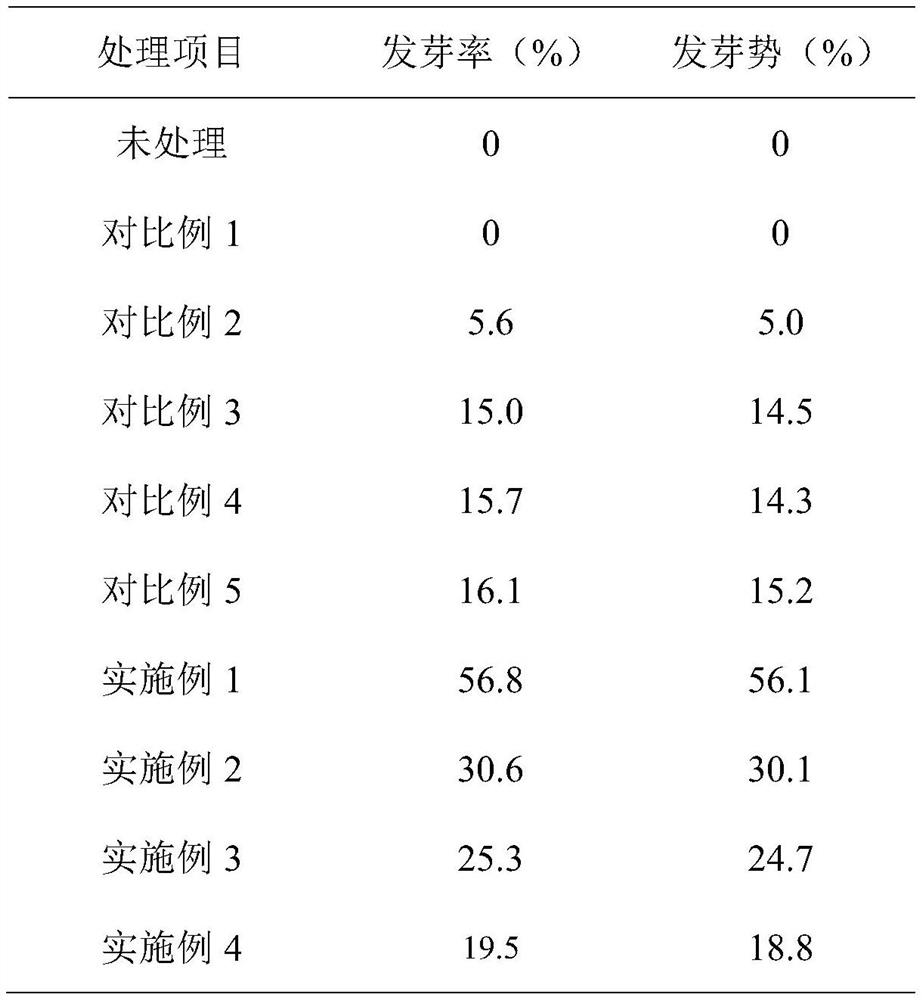Seed propagation method of fructus rosae laevigatae
A technology of Rosa roxburghii and seeds, applied in the fields of seed and rhizome treatment, agriculture, application, etc., can solve the problems that the seed propagation method cannot be popularized in a large area, and the dormancy characteristics are complicated, so as to achieve neat and robust emergence in the field, shorten the development time, and avoid loss effect
- Summary
- Abstract
- Description
- Claims
- Application Information
AI Technical Summary
Problems solved by technology
Method used
Image
Examples
Embodiment 1
[0031] The present embodiment discloses a seed propagation method of Fructus Rosa, comprising the following steps:
[0032] 1. Seed collection: From September to October, collect mature orange-red golden cherry fruits, peel off the seeds inside, wash them with clean water, put them in a ventilated place indoors for about 14 days to dry naturally, and collect them for later use.
[0033] 2. Warm stratification: Mix the seeds collected in step 1 with perlite in a ratio of 1:3 to obtain a mixture, spray clear water, keep it moist (the surface layer is moist, and the bottom layer has no water accumulation), put it into a breathable cloth bag, and place it at 25 ℃ thermostat. Turn over the layered mixture every 2 days, and rinse the mixture with warm water at 25°C every 4 days. The duration of the whole warm stratification is 90 days.
[0034] 3. Cold stratification: put the mixture after the warm stratification treatment in step 2 together with the cloth bag in the refrigerator ...
Embodiment 2
[0039] The present embodiment discloses a seed propagation method of Fructus Rosa, comprising the following steps:
[0040] 1. Seed collection: From September to October, collect mature orange-red golden cherry fruits, peel off the seeds inside, wash them with clean water, put them in a ventilated place indoors for about 14 days to dry naturally, and collect them for later use.
[0041] 2. Warm stratification: Mix the seeds collected in step 1 with perlite in a ratio of 1:3 to obtain a mixture, spray clear water, keep it moist (the surface layer is moist, and the bottom layer has no water accumulation), put it into a breathable cloth bag, and place it at 28 ℃ thermostat. Turn over the layered mixture every 2 days, and rinse the mixture with warm water at 25°C every 4 days. The duration of the whole warm stratification is 30 days.
[0042] 3. Cold stratification: place the mixture after the warm stratification treatment in step 2 together with the cloth bag in a constant temp...
Embodiment 3
[0047] This example is roughly similar to Example 1, except that the temperature of warm stratification in step 2 is 25° C. and the time is 30 days; the temperature of cold stratification in step 3 is 4° C. and the time is 240 days.
PUM
 Login to View More
Login to View More Abstract
Description
Claims
Application Information
 Login to View More
Login to View More - R&D Engineer
- R&D Manager
- IP Professional
- Industry Leading Data Capabilities
- Powerful AI technology
- Patent DNA Extraction
Browse by: Latest US Patents, China's latest patents, Technical Efficacy Thesaurus, Application Domain, Technology Topic, Popular Technical Reports.
© 2024 PatSnap. All rights reserved.Legal|Privacy policy|Modern Slavery Act Transparency Statement|Sitemap|About US| Contact US: help@patsnap.com








